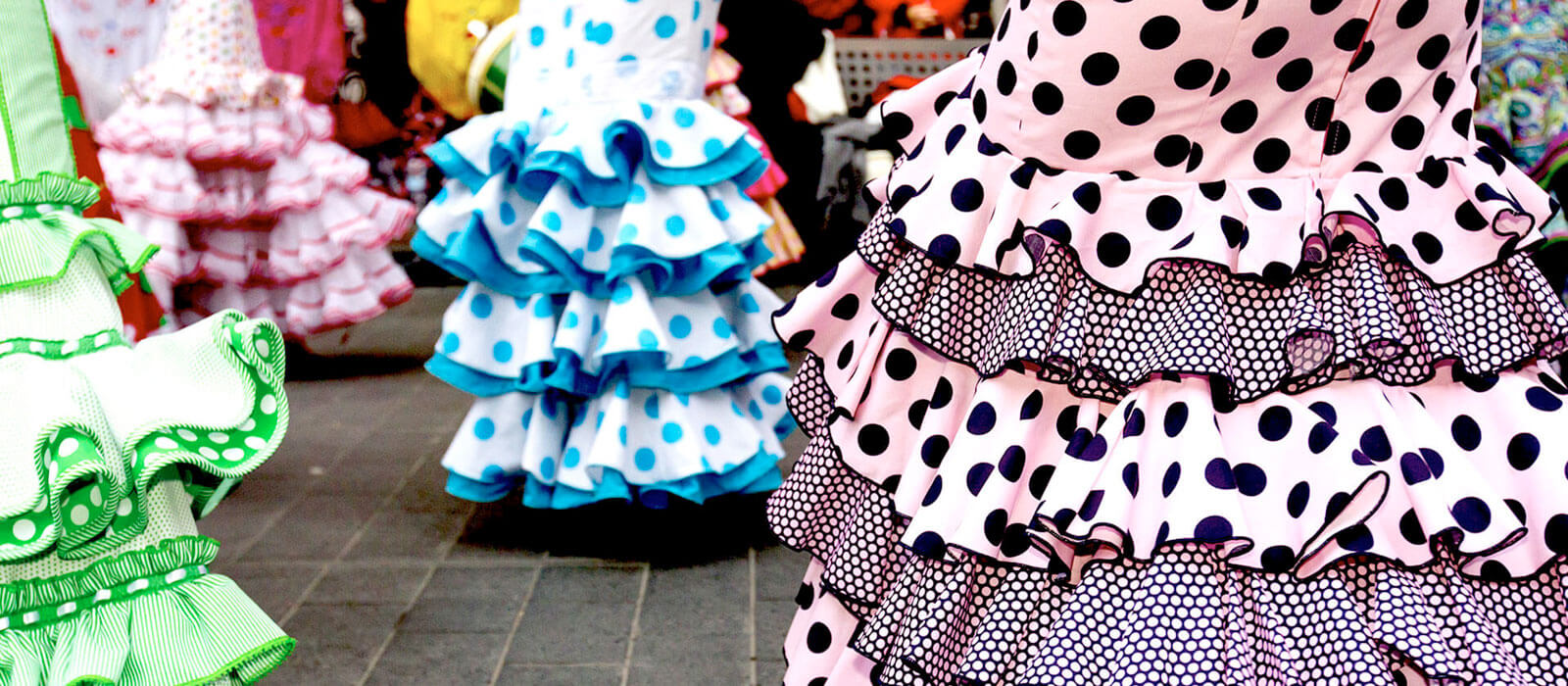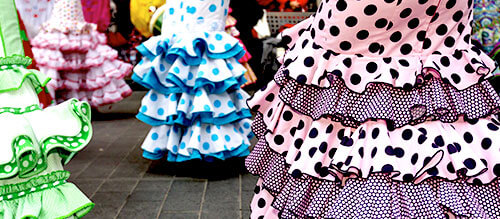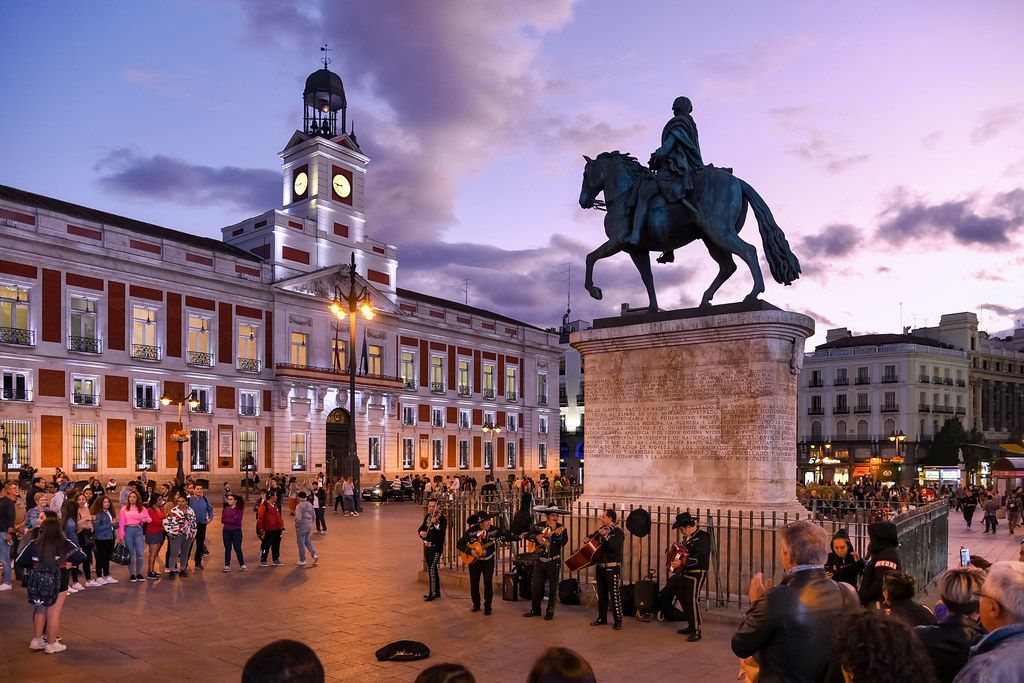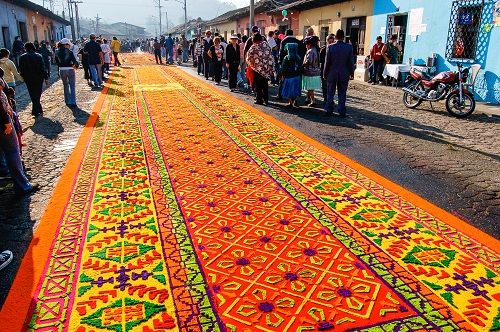Unusual festivals in Spain | Unusual traditions in Spain
Unusual festivals in Spain. Did you know that there are unusual traditions in Spain that you may not be familiar with? Don Quijote tells you all about them.

We've already told you about the most popular festivals in Spain, but did you know that there are also some lesser-known celebrations and festivities in the country?
Celebrating a saint by running in front of bulls, starting a battle using tomatoes as ammunition, or burning giant puppets or dolls in the streets of the city are some of the most popular festivals in Spain. Or perhaps you've heard of Los Sanfermines, Las Fallas, or La Tomatina?
In addition to these, there are other unusual festivals and traditions in Spain, many of them unique, which are celebrated in lesser-known or less touristy areas. Want to learn about them? Keep reading!
La Vijanera (Cantabria)
La Vijanera is a winter masquerade that symbolizes the expulsion of evil spirits, the farewell to the old year, and the arrival of the new. Symbolic characters such as the zarramacos (with cowbells), the preñá, the bear, the madama, etc. participate in it.
It is celebrated in Silió (Molledo, Cantabria) on the first Sunday in January (unless that day is January 1, in which case it is moved to the following Sunday).
The origin of La Vijanera has to do with pre-Roman roots and winter rituals related to fertility and the renewal of the cycle. The figure of Janus (Roman god of beginnings) is behind some of its symbolism. It was revived as a festival in the 1980s.
Santa Marta de Ribarteme (Pontevedra)
In As Neves, in Pontevedra, the festival of Santa Marta takes place on July 29. The festival of Santa Marta de Ribarteme is also known as the “pilgrimage of the almost dead.” Here, people who have overcome a serious illness or accident parade in coffins as an offering of thanks to Santa Marta for having been saved.
It has medieval origins and is based on devotion to Santa Marta, linked to resurrection and protection from death.
Characteristics of this tradition are the processions with people inside coffins carried by relatives, the chants, promises, and thanksgiving.
Concurs de Castells (Tarragona)
Let's move to Tarragona, where the Concurs de Castells, a biannual competition of human towers or castells, takes place. The colles castelleres compete to build the tallest and most complex structure.
Specifically, in the Tarraco Arena Plaça, Tarragona, the Concurs de Castells is held on the first weekend of October in even-numbered years.
The castellera tradition began more than two centuries ago in Catalonia. The competition as such was first held in 1932 and became established in 1970. In this unusual Spanish festival, human towers of up to 10 stories are built, requiring a high level of coordination and risk. In addition, the boy or girl who crowns the tower is called an enxaneta.
El Cascamorras (Granada)
A character named Cascamorras attempts to recover the image of the Virgin of Mercy. The inhabitants of the rival town welcome him by smearing him with paint to prevent him from fulfilling his mission. This is what happens in the tradition of El Cascamorras in Granada.
It is celebrated on September 6 in Baza and September 9 in Guadix. This celebration is based on a historical dispute in the 15th century between the two towns over ownership of the image of the Virgin.
This tradition is characterized by colorful paintings, races, music, and water. In addition, El Cascamorras has been declared a festival of International Tourist Interest.If you want to experience this festival firsthand, you can come to don Quijote's Spanish school Granada and attend the El Cascamorras celebration.
La Danza de la Muerte (Girona)
A medieval performance that shows the inevitability of death. During the La Danza de la Muerte (Dance of Death) festival, people dance in silence, with characters such as Death with a scythe, skeletons, and the flag of human finitude.
It takes place in Verges, Girona, on Holy Thursday night during Holy Week.
This tradition dates to the 14th century, at the height of epidemics and medieval spirituality. It is one of the oldest dances of death in Europe.
Los Enharinados (Alicante)
Los Enharinados is a festive battle in which participants throw flour, eggs, and firecrackers at each other. This festival symbolizes a satirical coup d'état in which the Enharinados take power for a day.
It is celebrated in Ibi, Alicante, every December 28, Day of the Holy Innocents in Spain. Its origins date back to the 19th century, and it began as a satire on local injustices and tax collection.
The showering of flour and eggs throughout the town, the military costumes and parodies of the authorities, as well as the symbolic fines, which are then donated to charity, are the most characteristic features of this unusual festival in Spain.
Fiesta de la Filoxera (Catalonia)
On September 7 and 8, Sant Sadurní d'Anoia celebrates the Fiesta de la Filoxera.
It commemorates the arrival of the phylloxera, the pest that devastated European vineyards in the 19th century. Phylloxera destroyed almost all the vineyards in the Penedès region, and this celebration was created in 1982 to remember the tragedy and the recovery of the wine sector. The town's fight against insects is dramatized with costumes and giant figures.
Baixada dels Raiers (Lleida)
The Baixada dels Raiers is a reenactment of the ancient trade of the raiers: men who descended rivers on rafts made of tied-together logs, transporting wood from the Pyrenees to the lowlands.
It is celebrated at the end of July or beginning of August in Coll de Nargó (Lleida). This festival is based on a real trade that existed until the mid-20th century. Log rafts were an essential means of transport.
Nochevieja en agosto (Granada)
Yes, New Year's Eve in August, as you read it. This celebration is an alternative to New Year's Eve in which the village of Bérchules, Granada, celebrates “New Year's Eve” on the first Saturday in August. This is because in 1994 a power cut prevented the real New Year's Eve from being celebrated and they decided to move it to the summer.
It features bells ringing in August, grapes, toasts, party favors, and music, all in a summer atmosphere with a Christmas theme.
El Salto del Colacho (Burgos)
A man dressed as the devil (el Colacho) jumps over babies lying on mattresses. It is believed that this expels evil spirits and purifies the newborns.
El Salto del Colacho is celebrated in Castrillo de Murcia, in Burgos, during the Corpus Christi festival, so the date varies between May and June. It has been documented since the 17th century and is a ritual that combines religious tradition and popular symbolism about the protection of children.
If you want to discover more traditions, facts, and continue learning Spanish, sign up for an intensive Spanish course with us and discover the beauty and hidden culture of Spain firsthand.


 <svg xmlns="http://www.w3.org/2000/svg" width="57" height="57" viewBox="0 0 57 57"><metadata><?xpacket begin="" id="W5M0MpCehiHzreSzNTczkc9d"?><x:xmpmeta xmlns:x="adobe:ns:meta/" x:xmptk="Adobe XMP Core 5.6-c138 79.159824, 2016/09/14-01:09:01"><rdf:RDF xmlns:rdf="http://www.w3.org/1999/02/22-rdf-syntax-ns#"><rdf:Description rdf:about=""/></rdf:RDF></x:xmpmeta><?xpacket end="w"?></metadata><defs><style> .cls-1 { fill: #d2283d; fill-rule: evenodd; }</style></defs><path class="cls-1" d="M830.68,1105.66h3.94a0.92,0.92,0,1,0,0-1.84h-3.94A0.92,0.92,0,1,0,830.68,1105.66Zm30.71,8.38a2.009,2.009,0,0,1-1.064-2.08l1.238-7.58a3.87,3.87,0,0,0-3.828-4.5h-2.543a8.817,8.817,0,0,0-8.754-7.88h-7.88a8.817,8.817,0,0,0-8.754,7.88h-2.543a3.882,3.882,0,0,0-3.828,4.5l1.246,7.63a1.946,1.946,0,0,1-1.026,2.01,18.656,18.656,0,0,0,6.871,34.86,19.591,19.591,0,0,0,2.155.12,18.43,18.43,0,0,0,9.83-2.81,18.483,18.483,0,0,0,7.713,2.69,19.591,19.591,0,0,0,2.155.12,18.448,18.448,0,0,0,12.408-4.75A18.649,18.649,0,0,0,861.39,1114.04Zm-8.059-14.16h-2.078a8.8,8.8,0,0,0-3.1-5.82A6.973,6.973,0,0,1,853.331,1099.88Zm-10.2,4.5,1.246,7.63a1.949,1.949,0,0,1-1.026,2.01c-0.289.15-.574,0.32-0.856,0.5-0.264-.17-0.531-0.33-0.8-0.48a2.009,2.009,0,0,1-1.064-2.08l1.237-7.58a3.881,3.881,0,0,0-3.827-4.5h-2.432a6.955,6.955,0,0,1,13.786,0H846.96A3.881,3.881,0,0,0,843.133,1104.38Zm-6.285-10.32a8.8,8.8,0,0,0-3.1,5.82h-2.078A6.973,6.973,0,0,1,836.848,1094.06Zm-11.134,8.38a2.04,2.04,0,0,1,1.548-.71h10.776a2.022,2.022,0,0,1,2,2.35l-1.237,7.58a3.781,3.781,0,0,0,.523,2.59l-6.679,4.18-6.664-4.17a3.7,3.7,0,0,0,.517-2.54l-1.246-7.64A2.029,2.029,0,0,1,825.714,1102.44Zm5.014,44.6a16.8,16.8,0,0,1-12.84-24.72,16.9,16.9,0,0,1,6.658-6.69c0.026-.01.051-0.03,0.076-0.04l7.538,4.71a0.926,0.926,0,0,0,.979,0l7.54-4.72c0.039,0.03.077,0.05,0.116,0.08A16.8,16.8,0,0,1,830.728,1147.04Zm16.391-28.45a13.024,13.024,0,0,1,5.229-1.11,12.865,12.865,0,1,1-5.222,24.63A18.635,18.635,0,0,0,847.119,1118.59Zm16.435,24.28a16.667,16.667,0,0,1-13.128,4.17,16.471,16.471,0,0,1-6.261-2.02c0.314-.25.622-0.5,0.923-0.77,0.256-.23.5-0.47,0.746-0.71a14.708,14.708,0,1,0-.008-26.38,18.991,18.991,0,0,0-1.668-1.48c0.029-.02.058-0.03,0.087-0.05a3.8,3.8,0,0,0,1.956-3.91l-1.246-7.64a2.022,2.022,0,0,1,2-2.35h2.5v3.01a0.924,0.924,0,0,0,1.847,0v-3.01H853.4v3.01a0.923,0.923,0,0,0,1.846,0v-3.01h2.5a2.022,2.022,0,0,1,2,2.35l-1.237,7.58a3.9,3.9,0,0,0,1.99,4A16.793,16.793,0,0,1,863.554,1142.87Z" transform="translate(-814 -1092)"/></svg>
<svg xmlns="http://www.w3.org/2000/svg" width="57" height="57" viewBox="0 0 57 57"><metadata><?xpacket begin="" id="W5M0MpCehiHzreSzNTczkc9d"?><x:xmpmeta xmlns:x="adobe:ns:meta/" x:xmptk="Adobe XMP Core 5.6-c138 79.159824, 2016/09/14-01:09:01"><rdf:RDF xmlns:rdf="http://www.w3.org/1999/02/22-rdf-syntax-ns#"><rdf:Description rdf:about=""/></rdf:RDF></x:xmpmeta><?xpacket end="w"?></metadata><defs><style> .cls-1 { fill: #d2283d; fill-rule: evenodd; }</style></defs><path class="cls-1" d="M830.68,1105.66h3.94a0.92,0.92,0,1,0,0-1.84h-3.94A0.92,0.92,0,1,0,830.68,1105.66Zm30.71,8.38a2.009,2.009,0,0,1-1.064-2.08l1.238-7.58a3.87,3.87,0,0,0-3.828-4.5h-2.543a8.817,8.817,0,0,0-8.754-7.88h-7.88a8.817,8.817,0,0,0-8.754,7.88h-2.543a3.882,3.882,0,0,0-3.828,4.5l1.246,7.63a1.946,1.946,0,0,1-1.026,2.01,18.656,18.656,0,0,0,6.871,34.86,19.591,19.591,0,0,0,2.155.12,18.43,18.43,0,0,0,9.83-2.81,18.483,18.483,0,0,0,7.713,2.69,19.591,19.591,0,0,0,2.155.12,18.448,18.448,0,0,0,12.408-4.75A18.649,18.649,0,0,0,861.39,1114.04Zm-8.059-14.16h-2.078a8.8,8.8,0,0,0-3.1-5.82A6.973,6.973,0,0,1,853.331,1099.88Zm-10.2,4.5,1.246,7.63a1.949,1.949,0,0,1-1.026,2.01c-0.289.15-.574,0.32-0.856,0.5-0.264-.17-0.531-0.33-0.8-0.48a2.009,2.009,0,0,1-1.064-2.08l1.237-7.58a3.881,3.881,0,0,0-3.827-4.5h-2.432a6.955,6.955,0,0,1,13.786,0H846.96A3.881,3.881,0,0,0,843.133,1104.38Zm-6.285-10.32a8.8,8.8,0,0,0-3.1,5.82h-2.078A6.973,6.973,0,0,1,836.848,1094.06Zm-11.134,8.38a2.04,2.04,0,0,1,1.548-.71h10.776a2.022,2.022,0,0,1,2,2.35l-1.237,7.58a3.781,3.781,0,0,0,.523,2.59l-6.679,4.18-6.664-4.17a3.7,3.7,0,0,0,.517-2.54l-1.246-7.64A2.029,2.029,0,0,1,825.714,1102.44Zm5.014,44.6a16.8,16.8,0,0,1-12.84-24.72,16.9,16.9,0,0,1,6.658-6.69c0.026-.01.051-0.03,0.076-0.04l7.538,4.71a0.926,0.926,0,0,0,.979,0l7.54-4.72c0.039,0.03.077,0.05,0.116,0.08A16.8,16.8,0,0,1,830.728,1147.04Zm16.391-28.45a13.024,13.024,0,0,1,5.229-1.11,12.865,12.865,0,1,1-5.222,24.63A18.635,18.635,0,0,0,847.119,1118.59Zm16.435,24.28a16.667,16.667,0,0,1-13.128,4.17,16.471,16.471,0,0,1-6.261-2.02c0.314-.25.622-0.5,0.923-0.77,0.256-.23.5-0.47,0.746-0.71a14.708,14.708,0,1,0-.008-26.38,18.991,18.991,0,0,0-1.668-1.48c0.029-.02.058-0.03,0.087-0.05a3.8,3.8,0,0,0,1.956-3.91l-1.246-7.64a2.022,2.022,0,0,1,2-2.35h2.5v3.01a0.924,0.924,0,0,0,1.847,0v-3.01H853.4v3.01a0.923,0.923,0,0,0,1.846,0v-3.01h2.5a2.022,2.022,0,0,1,2,2.35l-1.237,7.58a3.9,3.9,0,0,0,1.99,4A16.793,16.793,0,0,1,863.554,1142.87Z" transform="translate(-814 -1092)"/></svg>































